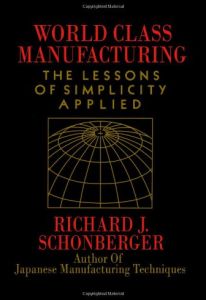Join getAbstract to access the summary!

Join getAbstract to access the summary!
Richard J. Schonberger
World Class Manufacturing
The Lessons of Simplicity Applied
Free Press, 1986
What's inside?
World-class manufacturing demands integrated design, blended management and alignment of process, people and equipment. What does that mean? Read on...
Recommendation
Richard J. Schonberger, author of the critically acclaimed book, Japanese Manufacturing Techniques, which revolutionized American manufacturing theory and practices, now examines how world-class manufacturing techniques can be implemented by American corporations. This 1986 classic remains valuable, since manufacturing changes do not happen overnight, and plenty of companies are far from world-class in their approach to efficiency and productivity. Schonberger writes clearly, authoritatively and often amusingly, covering every element of world-class manufacturing in detail. getAbstract recommends this book for everyone involved in the manufacturing process, not just mangers and executives, but all employees who seek a context and a future for their work.
Summary
About the Author
Richard J. Schonberger is an authority on production and manufacturing. The author of Japanese Manufacturing Techniques , he is also president of Schonberger and Associates, Inc., a consulting firm in Seattle. He was formerly a professor of management at the University of Nebraska.

















Comment on this summary